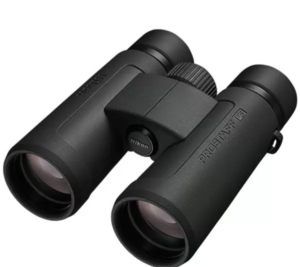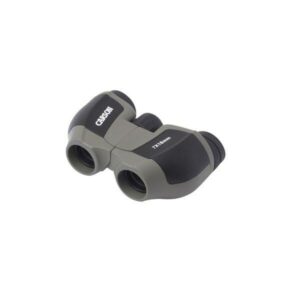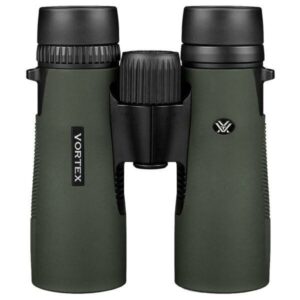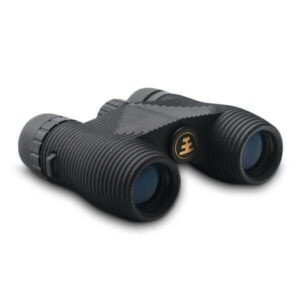Binoculars are high-magnification devices that help you visualize the outdoors from up close. They make the outdoor experiences come alive, be it bird watching, wildlife safaris, star gazing, concerts, or sports. Therefore, it is very important to invest in the right pair of binoculars. With so many options available in the market, how to pick binoculars that best serve your purpose becomes a huge challenge.
Through this binoculars buying guide, we shall elucidate binocular terminologies, types of binoculars, how to choose binoculars, budget considerations, and guidelines on how to maintain and care for them.
Understanding Binocular Terminology
The first step to buying any product is understanding the features and specifications they come with. Binoculars are no exception. So, before we get into further details about buying binoculars, let’s understand the terminologies that you will come across in any binoculars catalog.
-
Magnification and Aperture
Magnification is the number that lets you know how many times an object is magnified or how much larger it will appear. The aperture is the diameter of each of the front or objective lenses in millimeters. Generally, you will see something like 7×50 or 8×30 on the binoculars. Here, the first number represents the binocular magnification, while the second number stands for the aperture. In other words, 7×50 binoculars will make objects appear seven times larger than with the naked eye, and the objective lenses will be 50 mm in diameter. This implies that the larger the objective lenses, the greater the light grasp, and the brighter the object will appear at a given magnification.
-
Field of View
The field of view is the area of land or sky that the binocular glasses bring to your eyes. Binoculars manufacturers mention this as the width of feet at 1000 yards. For instance: If 372 feet at 1000 yards is mentioned on 7×50 binoculars, it represents its linear field of view. If your binoculars have a higher power, the field of view becomes smaller. In astronomy, the field of view is depicted in degrees. Just divide the linear field by 52.4. So, 7×50 binoculars will have an angular field of view of slightly more than 7o.
-
Exit Pupil
When you hold the binoculars a foot or so from the eyes, you will see a disk of light floating in the eyepiece. It is called an exit pupil. If you want the full light-collecting benefit of the aperture, this little disk must be equal to or smaller than the pupil of your eye. To measure the exit pupil, just divide the aperture by the magnification. In 8×30 binoculars, the exit pupil will be 3.75 mm wide.
-
Eye Relief
Eye relief represents how far the binoculars can be held from the eyes and still let you see the full field of view. If you have astigmatism, you will have to go for long eye relief. On the other hand, if you are nearsighted or farsighted, you can remove your glasses and refocus the binoculars to compensate.
Let’s Explore the Different Types of Binoculars
Binoculars are of different types, depending on their purpose and specifications.
Let’s take a look at each of them.
-
General Purpose Binoculars
With a universal design and different applications, general-purpose binoculars are great for wildlife viewing and sports matches. Although they do not come with advanced functionalities, they are pretty versatile and great for beginners.
-
Compact Binoculars
As the name suggests, compact binoculars are small and lightweight. They can be carried in the pocket, purse, or glove compartment. They have a small objective lens, magnification power, and exit pupil diameter. It is a great idea to use them for children and as a backup tool. They are not suitable for use in low-light conditions.
-
Digital Camera Binoculars
Digital camera binoculars have an in-built digital camera. They are heavier, bulkier, and costlier, but definitely worth the investment. You can also use additional accessories like wide-angle eyepieces, a backlight for night shooting, and video recording.
-
Giant Binoculars
With large objective lenses, giant binoculars are useful in low-light conditions. They have a wider field of view. For instance, giant binoculars allow you to see the whole track in a racetrack. Hence, these binoculars are heavy and pricey, which makes them unsuitable for hiking trips.
-
Image Stabilizing Binoculars
Image stabilizing binoculars minimize image shaking. So the perceived image is sharp and clear. If you want to use the binoculars from your moving car or boat, these are the perfect choice. They are costlier than regular binoculars.
-
Marine Binoculars
Featuring a waterproof shell, marine binoculars can stay afloat if you drop them in water by mistake. These binoculars are sturdy, reliable, and have large objective lenses. So, you can use them in dim light conditions like dusk or fog. As they are lightweight, you can equip them with an image stabilization system.
-
Military Binoculars
Military binoculars can endure mechanical shock and dropping. They provide sufficient protection against moisture. They can be used with built-in compasses and night vision devices.
-
Night Vision Binoculars
Certain night vision binoculars and spotting scopes increase the amount of collected light. Some others collect, amplify, and convert infrared light (thermal radiation) into visible light. You can use these binoculars to observe nocturnal animals and for military purposes.
Proven Tips for Choosing Binoculars
A number of variables come into play while choosing binoculars. They are:
-
Magnification Power
In the specifications list, the number in front of the ‘X’ represents magnification. For example: 10x means the binoculars have ten times the magnification. In 10x binoculars, your field of view becomes smaller, and the handshake also influences the vision. If you are above a certain age and have the problem of shaky hands, 8x magnification is better. It has a larger field of view and less shake while using them.
10x magnification works well in bird-watching binoculars. On the other hand, 8x magnification is advisable for people who are interested in wildlife viewing and scanning open areas. Go through the binocular magnification chart to make the right choice of how to buy binoculars.
-
Objective Lens Size
The objective lens diameter represents the amount of light that enters the binoculars. The bigger the object lens size, the lighter the image. Some binoculars have the feature to create better images in low light conditions than your eyes. Go for binoculars with a bigger objective lens diameter if you are interested in viewing nocturnal animals.
-
Field of View
The field of view represents the size of the image produced in the binoculars. Binoculars with higher magnification yield a smaller field of view. For casual observers, a large field of view is the best. It will let you spot the object quickly.
-
Lens Coatings
The optical quality of the image depends on the coating on the lens. With a good coating, you get crisper and brighter images with clear contrasts. In uncoated lenses, around 4% of incident light per lens or air transition gets reflected. As an objective is made of multiple lenses, binoculars have many air transitions. For example: binoculars with seven glass elements per side, that is, a 2-lens objective, two prisms, and a 3-lens ocular means that only 56.5% of the light emitted by the objective reaches your eye. With the help of a simple coating, this loss gets reduced to 1.5%. In multi-coated objectives, the lenses are coated with numerous layers and bring exceptional results.
-
Budget
Binoculars by Vortex Optics, although expensive, deliver a rock-solid optic. They are available in 12×50 magnification and objective diameter. They are priced at USD 289.99 but it is totally worthwhile as it gives you outstanding resolution and color fidelity. On the other hand, compact binoculars are available at USD 95. So, if you are looking for some fun and casual activities, they are the best bet for you.
Let’s Explore the Best Binoculars for Long Distance
There is a wide range of binoculars available in the market, nowadays. They help you enjoy your outdoor activities to the fullest, whether it is wildlife spotting, bird watching, or hiking in the mountains. Some of the best binoculars for long distances are:
-
Nikon PROSTAFF P3 10×42

Nikon PROSTAFF P3 10×42 are waterproof, fog-proof, and drop-resistant binoculars with comfortable long-eye relief. The lightweight, easy-to-use design makes them ideal binoculars for camping. It has a wide apparent field of view and multilayer-coated lenses for brighter images. The high-reflectivity silver-alloy mirror coating results in a bright and clear view. It is also available in an 8×30 model.
-
Carson Innovation in Quality Optics – MiniScout
 If you are looking for compact binoculars to carry at sporting events, concerts, or outdoors, Carson Optical’s JD-718 MiniScout is a wise choice. It is ultra-lightweight and small enough to fit in a pocket or purse. It has maximum focusing flexibility and offers seven times the magnification, which is reasonably good for outdoor activities.
If you are looking for compact binoculars to carry at sporting events, concerts, or outdoors, Carson Optical’s JD-718 MiniScout is a wise choice. It is ultra-lightweight and small enough to fit in a pocket or purse. It has maximum focusing flexibility and offers seven times the magnification, which is reasonably good for outdoor activities. -
Vortex Optics Diamondback HD
 Available in 10×42 and 12×50 specifications, Vortex binoculars have wonderful resolution and cut chromatic aberration. They offer exceptional color fidelity, edge-to-edge sharpness, and light transmission. These binoculars come with dielectric coating that offer bright, clear, color-accurate images. Rubber armor makes it a durable product, suitable for rugged terrains and water activities too. Waterproof O-ring seals prevent moisture, dust, and debris from entering the binoculars, thereby making them suitable for all environments.
Available in 10×42 and 12×50 specifications, Vortex binoculars have wonderful resolution and cut chromatic aberration. They offer exceptional color fidelity, edge-to-edge sharpness, and light transmission. These binoculars come with dielectric coating that offer bright, clear, color-accurate images. Rubber armor makes it a durable product, suitable for rugged terrains and water activities too. Waterproof O-ring seals prevent moisture, dust, and debris from entering the binoculars, thereby making them suitable for all environments. -
Nocs Provisions Standard Issue 8×25 Waterproof Binoculars
 With a wide field of view and eight times magnification, Nocs Provisions Standard Issue is a waterproof and fogproof product. It has scratch-resistant lenses, rugged impact-absorbing housing, and twist-up eyecups, compatible with glasses. They can be held effortlessly and endure 30 minutes under 3 ft water. Whether you are going camping, hiking, birdwatching, or on a wildlife safari, these binoculars would be the perfect companion.
With a wide field of view and eight times magnification, Nocs Provisions Standard Issue is a waterproof and fogproof product. It has scratch-resistant lenses, rugged impact-absorbing housing, and twist-up eyecups, compatible with glasses. They can be held effortlessly and endure 30 minutes under 3 ft water. Whether you are going camping, hiking, birdwatching, or on a wildlife safari, these binoculars would be the perfect companion.
Binoculars Maintenance and Care Tips
It is imperative to handle your binoculars with care. Here are some tips on how you can do so and increase their lifespan.
General Guidelines
- Never leave your binoculars in a car on a hot or sunny day or near heat-generating equipment.
- Do not expose the binoculars to sudden temperature changes. Doing so causes water condensation on interior lens surfaces. In case something like this happens, dry the binoculars well to remove all the fog. The lens quality is affected if its surface stays wet.
- Avoid using binoculars in water. Use a dry cloth to wipe off rain, dew, or mist from waterproof models. In case you accidentally drop the binoculars in water, pick them up immediately. Wipe the water off with a dry cloth, and then visit the shop from where you purchased the binoculars.
- Take care that you don’t rotate the diopter adjustment ring, focusing ring, and other movable parts of the binoculars’ body beyond the prescribed limit.
- Make sure you protect the binoculars from shock. Keep them away from high impacts, drops, or other hard blows as it would affect their accurately designed optical axis.
Binoculars Storage Guidelines
Keep the binoculars in a plastic bag or an airtight container with a desiccant. Never keep them in high humidity, high temperature, or dusty areas. In high-humidity areas, the lens surfaces get inundated with water condensation or mold. Never keep the binoculars in the supplied case to prevent the risk of mold accumulation.
Learn How to Clean the Binoculars?
Use a soft oil-free brush to remove any dust or sand that stains the lens surfaces. Use an oil-free lens tissue or soft clean cotton cloth damp with absolute alcohol to wipe the lens and remove the stains or fingerprint smudges. Ordinary tissue or velvet cloth can scratch the lens surface. So, using them is a strict no no.
Precaution While Using Binoculars
Do not look at the sun directly through the binoculars, as it can damage your eyes.
Conclusion
Binoculars are multifaceted tools used for various activities like hiking, wildlife viewing, birding, hunting, stargazing, sports events, and concerts. Just make sure you make an informed decision while buying your binoculars by considering factors like purpose you need it for, your budget, and specifications you are looking for. Also, maintain the binoculars properly so that they last long and you can use them to their maximum potential.
FAQs
1. How to select good binoculars to buy?
Choosing the right pair of binoculars depends on the purpose you need it for. For example: If you need binoculars for bird watching, go for 8-power magnification so that you get a wider field of view. Pick compact binoculars with a magnification of 8 or 10 and an objective lens diameter of less than about 28 if you are going backpacking and hiking. Durability and water resistance are also important factors to consider. 8×32 is an ideal size if you want to buy binoculars for paddling.
2. What are the best sights you can use binoculars for?
Binoculars can be used for bird watching, whale watching, wildlife safari, and star gazing. It is also used by hikers to view different mountain peaks.
3. What are the best binoculars for mountains?
Compact and lightweight binoculars with good optical performance are perfect for mountains. Go for models like the Vortex Optics Diamondback, Nikon Monarch series, or Zeiss Terra ED to have the best experience.
4. What is the use of binoculars? How do I use it for fun?
Binoculars enlarge the images of distant objects. You can use it for fun by carrying it on your backpacking or hiking trip. Use them for bird watching, jungle safari, whale watching, or star gazing. Some people even take it along in concerts or sports events to spot their favorite celebrities from up close.
5. What are binoculars, and how do they work?
Binoculars are handy tools offering a magnified, stereoscopic view of distant objects. On looking through the pair of binoculars, light enters through a lens, known as an objective lens, on each side. The objective lenses turn the image being viewed upside down. Then, the light passes through the prisms. The prisms turn the image right side up and reflect it toward eyepieces. Lastly, the light passes through the eyepieces and enters into the eyes. The lenses in the eyepieces enlarge the image. The user can adjust the focus of the binoculars with the help of a ring placed between the eyepieces.
6. What is the main function of binocular vision?
The main function of binocular vision is to magnify faraway objects so that they are easier to see.